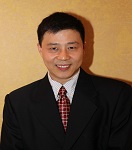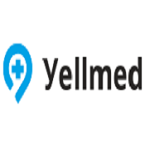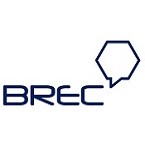Theme: {CME-CPD Credit Available} Current Scenario and Future Approach in Neuropharmaceutics
Neuropharmaceutics 2023
The organizing committee is glad to invite all the participants to attend 28th International Conference on Neuropharmacology and Neurochemistry scheduled to be held on May 22-23, 2023 in Vienna, Austria pertaining to the theme Current Scenario and Future Approach in Neuropharmaceutics. This conference includes prompt keynote presentations, special sessions, workshops, symposiums, oral talks, poster presentations, and Exhibitions in the field of Neuropharmacology and Neurochemistry.
Neuropharmaceutics 2023 anticipates hundreds of delegates including international keynote lectures and oral presentations by renowned speakers and poster presentations by students. Exhibitions and delegates from all around the world will craft a platform for global promotion and effective development in this field. It provides international networking and opportunities for collaborations with worldwide companies and industries.
WHY ATTEND?
Neuropharmaceutics 2023 is aimed the World's leading Medical Conference. The two days event on the same will host many Scientific and technical sessions and sub-sessions on leading and latest research transformation related to the field of Neuropharmacology and Neurochemistry, covering the globe. The attendees can find exclusive sessions and panel discussions on the latest innovations in the relevant sector.
Be the first to showcase your research, innovation, and brand to gain competitive advantages. Meet your target audience and explore your product and services.
- To Meet Experts
- Learning in a New Space
- New Tips & Tactics
- Certification
- Global Networking
- Rebuild New Customer Base
- Brand Establishment
- Best platform for international business and Networking opportunities
- Keynote forums by eminent Professors, Researchers
- Novel techniques to benefit your research and innovation
- Open Innovation Challenges
- Meet the Editors of referred journals, Society and Association members across the world
- Poster presentations by Young Researchers on Neuroscience
- Excellent platform to showcase the latest innovations and concepts in the Neuropharmacology
- Lectures from prominent speakers
Who Should Attend Neuropharmaceutics 2023?
A great opportunity to network with your peers from Academia and Industry:
- All the Stake Holders (both Academia & Industry) of the Sector
- Researchers & Innovators
- Experts Looking for Collaborative Work
- Product Developers
- Solution Providers
- Sales & Marketing Professionals
- Associations, Societies, & Professional Bodies
- Funding Agencies & Fund Raisers
- Management Bodies
- Decision Makers
- Neurologists
- Neuroscientists
- Neurosurgeons
- Neuropsychologist
- Neuropsychiatrists
- Neurology specialists
- Neuro Oncologists
- Neuro Pathologists
- Clinicians
- Healthcare Professionals
- Business Entrepreneurs
- Department Heads
- Professors
- Lead Researchers
- Research Directors
Track 1: Neuropharmacology and Neurochemistry
Neurochemistry and Neuropharmacology is the learning of how drugs distress cellular function in the nervous system, and the neural mechanisms through which they impact behavior. There are two key branches of neuropharmacology are behavioral and molecular. Behavioral neuropharmacology emphases on the learning of how drugs affect human behavior (neuro psychopharmacology), with the study of how drug requirement and addiction affect the human brain.
Track 2: Molecular and cellular neurochemistry
Molecular and Cellular Neuroscience prints unique research of high significance covering all aspects of neurosciences specified by the broadest interpretation of the journal's title. In specific, the journal emphases on synaptic maintenance, de-organization and re-organization, neuron-glia communication, and de-/regenerative neurobiology. In accumulation, studies using animal models of disease with translational prospects and experimental methods with backward validation of disease signatures from human patients are welcome.
Track 3: Neurological Disorders and Stroke
Neurological disorders are pathologically well-defined as disorders that affect the brain as well as the nerves found throughout the human body and the spinal cord. There are many abnormalities happens in the brain: Structural, biochemical or electrical, spinal cord or other nerves can result in a range of symptoms.
Track 4: Clinical Neurophysiology and Stroke
Stroke is the most common reason of death and the leading source of acquired neurologic handicap. The clinical neurophysiology of stroke emphases on slow EEG potentials recorded in stroke. A clinical neurophysiologist is a neurologist who focuses in the diagnosis of nervous system disorders. Neurophysiologists do EEG (electroencephalography), EMG (electromyography), and other actions to calculate the function of the brain and nervous system.
Track 5: Alzheimer’s and Parkinson’s Diseases
Alzheimer's and Parkinson's are both neurological illnesses and these diseases are affected by damaged brain cells. In both circumstances can involve dementia, besides depression, anxiety, and sleep disturbances. These diseases can lead to psychotic symptoms such as delusions and hallucinations. Alzheimer's disease has clumps of two main proteins are beta-amyloid and tau. Clumps of beta-amyloid are termed plaques, and tau clumps are termed tangles. Parkinson's disease has Lewy bodies in main areas of the brain that control movement and Lewy bodies are collected of the protein alpha-syncline.
Track 6: Neuroimmunology and Neurological Infections
Neuroimmunology is a branch that combines neuroscience and neuroscience is the study of the nervous system and immunology is the study of the immune system. Neuroimmunologists discovers better understanding in the relations of these two complex systems during development, homeostasis and response to injuries. The most common neurological infections are: An inflammation of the brain and Encephalitis that can be created by either bacteria or virus. Meningitis is the inflammation of the membranes that enclose the brain and spinal cord, can be created by either bacteria or virus.
Track 7: Brain Injury and Behavioral Neuroscience
Traumatic brain injury is a misfortune of various causes, pathologies, and extremely varied and often multifaceted clinical presentations. Because of its preference for brain systems underlying cognitive and multifaceted behavioral operations, it may cause chronic and severe psychiatric illness that needs expert management. Traumatic brain injury is a typical for other neuropsychiatric disorders and may serve as an incubator of new thoughts for neurodegenerative disease.
Track 8: Neuropharmacology and genetic aspects of CNS function
Neuropharmacology is the learning of the effects of drugs on the nervous system and targeting to develop compounds to benefit humans with psychiatric and neurological disease. These contain Huntington's disease, myotonic dystrophy, Rett syndrome and fragile X syndrome. In these cases, the single-gene mutation causes certain neurons in the central and peripheral nervous system to develop abnormally and function poorly.
Track 9: Cognitive Neuroscience and Psychology
Cognitive neuroscience is the learning of how the brain enables the mind. Cognitive science uses the experimental approaches of cognitive psychology and artificial intelligence to create and test models of higher-level cognition such as thought and language. Cognitive neuroscience is study cognition from the level of cranial nerve and is a significant field of learning science. It is main focus on the neural mechanisms of perception, selective attention, memory, language, emotion and consciousness.
Track 10: CNS and Brain Disorders
Central nervous system diseases are also known as central nervous system disorders are a group of neurological disorders that affect the structure or function of the brain or spinal cord, which collectively form the central nervous system. Brain and nervous system problems are common. These neurological disorders include multiple sclerosis, Alzheimer's disease, Parkinson's disease, epilepsy, and stroke, and can affect memory and ability to perform daily activities.
Track 11: Neuroscience and Artificial Intelligence
The advances in artificial intelligence systems can contribute to advancing neuroscience and revealing brain secrets. This provides for better models for the simulation of the human brain by neuroscientists and researchers. Neural networks act as "virtual brains" that capture our brain's representation. The link between artificial intelligence and neuroscience can lead to an understanding of the brain mechanisms that generate human awareness.
Track 12: Neuroinformatics and Computational Neuroscience
The maintenance of neuroscience databases is facilitated by neuroinformatics. The area is related to development of analytical tools and computer models for the sharing of data, the integration of knowledge and the examination of neuroscience big data. Computational neuroscience includes the study by computer modelling and mathematical analysis of brain function. In computer scientists, they carry out research in which data is collected and computer models are created based on the brain's electric models and biological functions.
Track 13: Human Brain Mapping
Brain mapping is a series of neuroscience methods based on mapping (biological) amounts or properties to (human or non-human) space representations of the brain that produce maps. Brain mapping helps doctors understand a problem's source better. Knowing a problem source permits specific therapies. The anatomy of the brain is properly understood. Brain mapping gives information on brain and connectivity communication.
Track 14: Brain Stimulation and Imaging
Therapies for brain stimulation use directly with electricity to activate or inhibit the brain. Strom can be directly determined by electrodes implanted in the brain or by electrodes placed non-invasively on the scalp. Electricity can also be induced through the use of magnetic fields on the head. Brain imagery and brain stimulation have both enhanced our understanding of normal functional mechanisms and changes related to brain and mental illness. Brain encouragement has also shown promise to reduce brain and mental illness symptoms and allows hypotheses derived from data on brain imaging to be tested.
Track 15: Neurogenesis
Neurogenesis is the process through which neuronal stem cells are produced (NSCs). It takes place in all animal species except proliferous animals (sponges) and placozoans. The process of neurogenesis is the formation of new neurons in the brain. In certain brain areas after birth and throughout our lifetime, neurogenesis is essential when an embryo develops.
Track 16: Neurotherapeutics and Case Studies
Neurotherapy teaches a person to produce better EEG patterns with positive strength. The customer is connected to EEG sensors that measure brain activity during a neurofeedback session. Connect the sensors to a computer, and the EEG signals control simple computer games. A type of alternative therapy, specifically one type of biofeedback that uses real-time electromephalography (EEG) displays to illustrate brain activity, is neurotherapy also known as neurofeedback (NFB), EEG biofeedback, or brainwave education.
Track 17: Brain Structure and Function
The three principal parts of the brain are the Cerebrum, and brainstem. The cerebrum consists of the right and left hemispheres and is the largest portion of the brain. It performs higher functions such as touch interpretation, vision and hearing, as well as speech, thought, emotion, learning and control of the movement. In the human body, the brain is the most important organ. It controls and coordinates actions and reacting, allows us to think and feel, and enables us, all things that make us human, to have memories and feelings.
Track 18: Pre- and post-synaptic function
The presynaptic neuron is the information sending cell (i.e., transmits chemical messages). The postsynaptic neuron is the information cell (i.e., receives chemical messages). PNs are inhibited indirectly by presynaptic inhibition, which regulates the probability of ORN-PN releases, while the postsynaptic inhibition directly inhibits PN activity by hyperpolarizing the membrane potential of PNs. The physiological difference between the PNs is pre- and postsynaptic inhibition.
Track 19: Synapse formation and neurotransmitter receptors
Synapse formation is a highly regulated process which leads to the transmission and receipt of signals in morphologically separate subcellular structures at pre- and post-synaptic sites. A neurotransmitter receptor is a class of receptors that binds neurotransmitters specifically in contrast to other molecules. Neurotransmitter receptors receive signals in post synaptic cells that trigger electric signal by regulating ion channel activity.
Track 20: Synaptic Function and Dysfunction in Brain Diseases
Synaptic dysfunction results in cell-intrinsic molecular mechanism modifications or changes in surrounding biochemical processes. A synaptic dysfunction at an early or late stage is a common denominator of several diseases called synaptopathies. Synaptopathy is a popular term used to define the key characteristics of the psychiatric and neurodegenerative diseases. It suggests that synaptic disorders can be the major determinant of such brain diseases.
Track 21: Synaptic plasticity and memory
The hypothesis of the synaptic plasticity and memory asserts that the activity-dependent synaptic plasticity is induced during memory formation at appropriate synapse and is both essential and sufficient to encode and store the kind of memory mediated by the brain area in which it is observed. Memories are first stored in the hippocampus, where in seconds of the events to be remembered, synapses between excitatory neurons begin to develop new circuits. A relatively small number of synapses can increase its strength by binding neurons into a circuit that stores a new memory.
Track 22: Brain Pathology and Oncology Research
Pathology is the knowledge of disease or damage causes and effects. Pathology highlights disease elements: source, growth methods (pathogenesis), structural cell changes and alterations result. Oncology teaches neoplasms of the backbone and brains, most of which are very frightful and life-threatening (astrocytoma, glioma, glioblastoma multiform, ependymoma, pontine glioma, and brain stem tumours are among the most examples of these). Glioma of brainstem and pons, multiform Glioblastoma and high-grade (highly anaplastic) Astrocytoma are among the worst among malignant cancers of the brain.
Track 23: Stem Cells Role in Neuro-Biological Treatment
After nervous system injury neural stem cells provide the possibility of replacing the lost tissue. Stem cells may, partly by secreting growth factors, encourage host neural repair, and their regeneration-promoting activities may be altered through gene delivery. Stem cells are unique human cells, which can develop into many different types of cells. This can vary between muscle cells and brain cells. In certain cases, damaged tissues can also be repaired. Neural stem cells can replace lost tissue after injury to the nervous system. The host neural repair can be enhanced by stem cells partly through secreting growth factors and gene supply can modify their regeneration promotions.
Track 24: Neurobiology and Behaviors
NBB continues to innovate by using advanced imaging techniques to examine the extraordinary abilities of the mind. The faculty leads students to learn how the brain produces memories, thoughts, emotions and awareness. The brain is a meeting place between our genes and the environment where nature interacts and nurtures. It can affect our intellectual circuitry and biochemistry, as well as genetic controls. In turn, these neurobiological mechanisms can affect conduct.
Track 25: Neurorehabilitation and Neural Repair
Innovative and trustworthy reports on functional recovery from neurological injury and long-standing neurological care are provided by Neurorehabilitation and Neural Repair. The main focus of neurological rehabilitation is on disability. In many ways, neurological rehabilitation differs from other neurological branches. Rehabilitation is the education process of a person with a disability, which is aimed at helping him or her to cope as independently as possible with family, friends, work and leisure.
Track 26: Neuroendocrinology
Neuroendocrinology is the biologic branch (in particular the physiological one) which study the interplay between the nervous system and the endocrine system. In a process called neuroendocrine integration, nervous and endocrine systems often work together to regulate the physiological processes of the human body. The recognition that the brain controls the secretion of hypo physical hormones, especially the hypothalamus, and subsequently expanded to explore numerous interconnections between endocrine and nervous systems, led to a neuroendocrinology.
Track 27: Pediatric Neurology and Epilepsy
Children with diseases and conditions which affect the nervous system are diagnosed and treated by pediatric neurologists. Patients with head injuries, seizures or muscle weakness are also included. Epilepsy is a chronic disease causing recurring seizures without provocation. An attack is a sudden rush of brain electrical activity. Two major types of convulsions are present. Widespread convulsions affect the entire brain. Only one part of the brain is affected by focal or partial seizures.
Track 28: Neuroimaging and Diagnostic Techniques
Neuroimaging is a technology class which provides an array of structural anatomy and physiological or metabolic functions within the central and peripheral nervous system, directly or indirectly derived from visual representation. The technology of the neuroimaging—for example, CT, MRI, FMRI and positron emission tomography (PET)—provides both anatomical and functional nervous system visualization, which is a major advancement in modern medicine and the science of neuroscience. The methods of neuro-imaging include: neuroimaging.
Track 29: Neuromodulation
Neuromodulation is defined as a field of science, medicine and bioengineering, comprising both implantable and implantable electronic and chemical technologies, impacting on neural interfaces, to enhance life for humanity by the International Neuromodulation Society (INS).
Track 30: Cerebral Blood Flow and Metabolism
The brain is one of the most active organs in the body metabolically. The brain stores no excess energy and derives almost all its energy requirements from aerobic glucose oxidation. It thus calls for continuous glucose and oxygen supply to comply with its energy demands. In most of the organ of the body, blood flow is closely associated with the metabolism of the tissue. An increase in tissue metabolism, such as during muscle contraction or changes in brain neural activity, leads to increased blood flow (active hyperemia).
The Global Neurology market is expected to increase at a compound annual growth rate (CAGR) of 3.5 percent from $33.3 billion in 2019 to $39.4 billion in 2024. A recent WHO survey suggested that various neurological disorders collectively accounts for more than 12% of global deaths on average, and it is predicted that the number of death occurring due to neurological diseases will rise from 95 million in 2015 to approximately 103 million in 2030. In 2010, the global cost associated with neurological diseases was estimated to be US$ 2.5 trillion, and it is expected to be over US$ 6 trillion in 2030. High-impacting elements such as ongoing neuro mapping research, government initiatives based on neuroscience, and algorithms used in the neuroscience sectors are driving the market growth.
The Neurology Device market is growing rapidly with a CAGR of 4% from USD 33 billion in 2019 to USD 39 billion by 2023. The neurology device market can be divided into two segments. The neurology market is segmented according to device types which include neurosurgical devices, CSF devices, neurostimulation devices, and cerebrospinal fluid devices accounts for the maximum share of the market. According to the geography segment, it is divided into the following regions: North America, Eastern Europe, Middle East, South America, Asia-Pacific, and Africa. Among these Asia-Pacific is the fastest-growing region and North America is the largest market for Neurological devices.
The global Neurosurgery market was valued at USD 12500 million in 2017 which is expected to increase during 2018-2026 at a rate of 8.0% CAGR. The global neurosurgery market is growing at substantial growth. The neurosurgery device market has a major role in countries from North America (USA, Canada, and Mexico), Europe (UK, France, Germany, and Russia), Asia-Pacific (India, China, and Korea), South America (Colombia, Brazil, and Argentina) and Africa and Middle East (Egypt, Saudi Arabia, UAE, and South Africa).
The major companies playing role in Neurology and Neurosurgery market are Zeppelin Medical Instruments, Abbott Laboratories, Ackermann, Zeiss, Medtronic, Merit Medical, Toshiba Medical, Boston Scientific Corporation, and Stryker Corporation.
Pharma Conference Committee is intended to honour prestigious award for talented Young researchers, scientists, Young Investigators, Post-Graduate students, Post-doctoral fellows, Trainees, Junior faculty in recognition of their outstanding contribution towards the conference theme. The Young Scientist Awards make every effort in providing a strong professional development opportunity for early career academicians by meeting experts to exchange and share their experiences on all aspects of Pharma.
Young Research’s Awards at Neuropharmaceutics 2023 for the Nomination: Young Researcher Forum - Outstanding Masters/Ph.D./Post Doctorate thesis work Presentation, only 25 presentations acceptable at the Neuropharmaceutics 2023 young research forum.
Benefits
- Young Scientist Award recongination certificate and memento to the winners.
- Our conferences provide best Platform for your research through oral presentations.
- Learn about career improvement with all the latest technologies by networking.
- Young Scientists will get appropriate and timely information by this Forum.
- Platform for collaboration among young researchers for better development.
- Provide an opportunity for research interaction and established senior investigators across the globe in the field.
- Share the ideas with both eminent researchers and mentors.
- It’s a great privilege for young researchers to learn about the research areas for expanding their research knowledge.
-
Eligibility
- Young Investigators, Post-Graduate students, Post-doctoral fellows, Trainees, Junior faculty with a minimum of 5 years of research experience
- Presentation must be into scientific sessions of the conference.
- Each Young Researcher / Young Scientist can submit only one paper (as first author or co-author).
- Age limit-Under 35yrs
- All submissions must be in English.
- Neuropharmaceutics 2023 provides best platform to expand your network, where you can meet scientists, authorities and CROs from around the world. It’s your time to grab the opportunity to join Neuropharmaceutics 2023 for promoting your research article and to facilitate prestigious award in all categories. In this fame, we look forward for your contribution and astonishing dedication to make our Neuropharmaceutics 2023 more successful.
Conference Highlights
- Neuropharmacology and Neurochemistry
- Neurogenesis
- Neuromodulation
- Brain and CNS Disorders
- Brain Function and Structure
- Brain Imaging and Stimulation
- Neuropharmacology and genetic aspects of CNS function
- Alzheimer’s and Parkinson’s Diseases
- Brain Injury and Behavioural Neuroscience
- Brain Oncology Research and Pathology
- Cerebral Blood Flow and Metabolism
- Clinical Neurophysiology and Stroke
- Cognitive Neuroscience and Psychology
- Human Brain Mapping
- Molecular and cellular neurochemistry
- Neurobiology and Behaviors
- Neuroendocrinology
- Neuroimaging and Diagnostic Techniques
- Neuroimmunology and Neurological Infections
- Neuroinformatics and Computational Neuroscience
- Neurological Disorders and Stroke
- Paediatric Neurology and Epilepsy
- Stem Cells Role in Neuro-Biological Treatment
To share your views and research, please click here to register for the Conference.
To Collaborate Scientific Professionals around the World
| Conference Date | May 22-23, 2023 | ||
| Sponsors & Exhibitors |
|
||
| Speaker Opportunity Closed | Day 1 | ||
| Poster Opportunity Closed | Click Here to View | ||
Useful Links
Special Issues
All accepted abstracts will be published in respective Our International Journals.
- Journal of Neurology & Neurophysiology
- Neurological Disorders
- International Journal of Neurorehabilitation
Abstracts will be provided with Digital Object Identifier by














